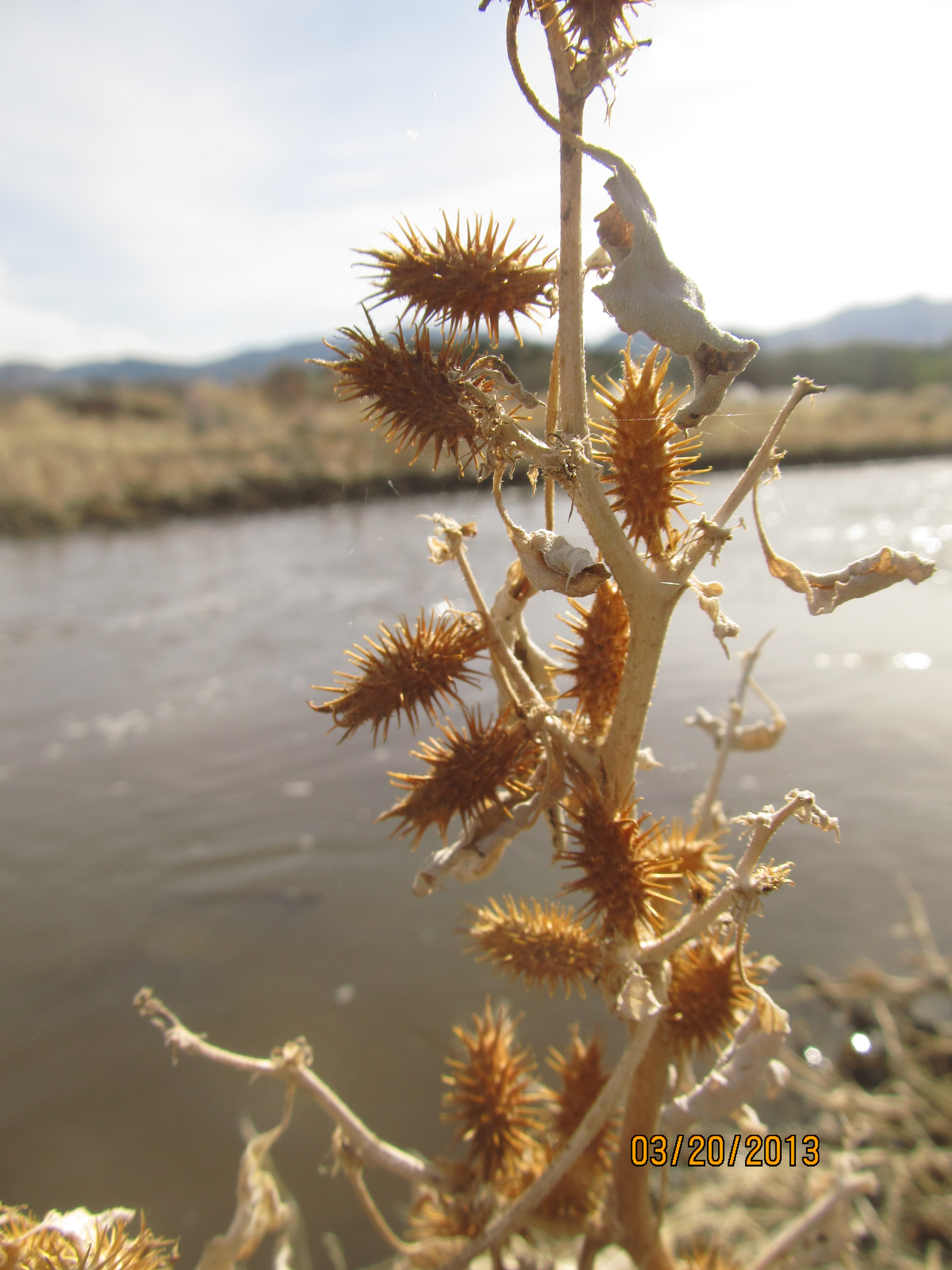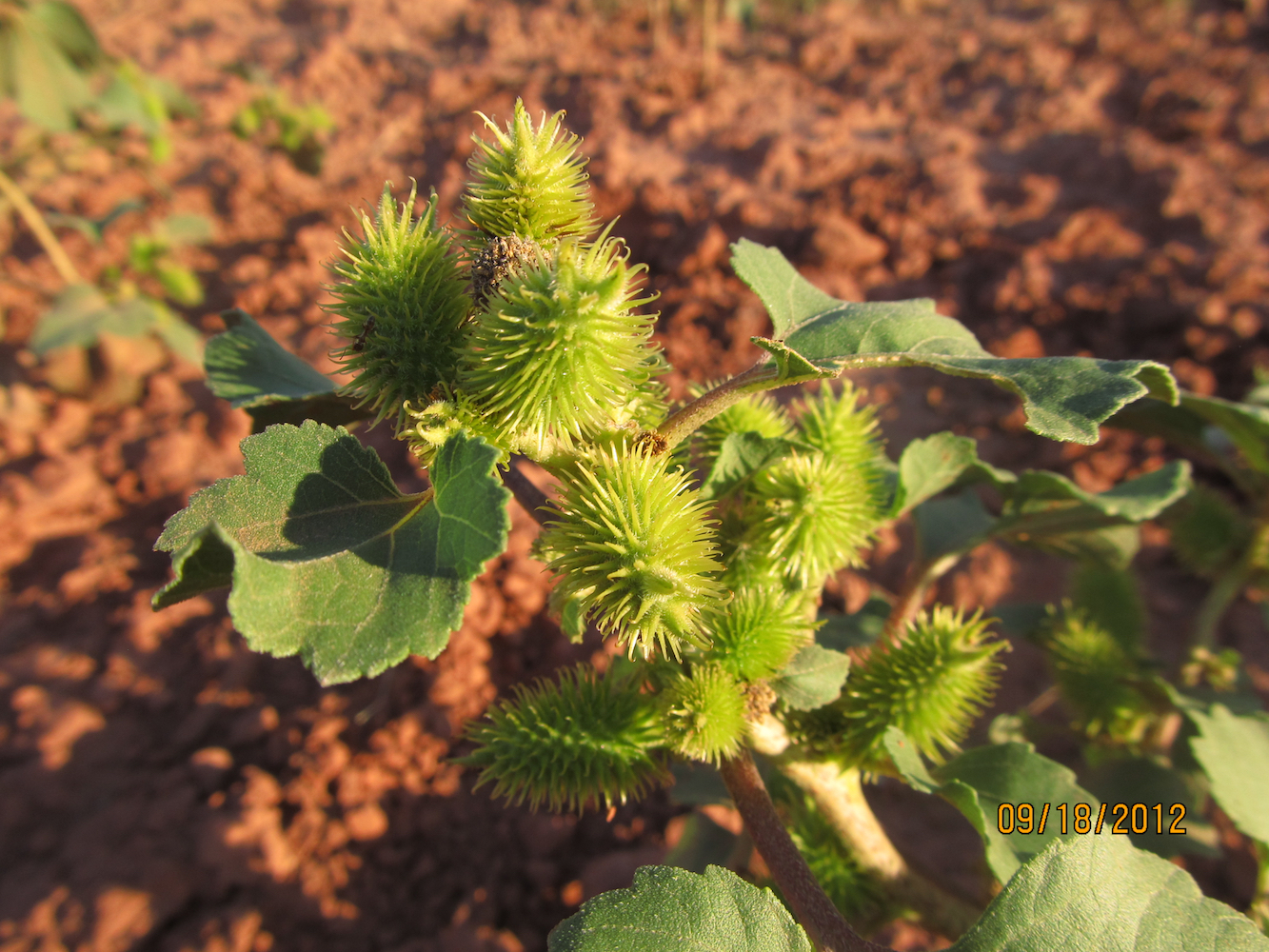Selected Plants of Navajo Rangelands
Cocklebur

Cocklebur is an annual plant that infests disturbed areas such as roadsides, ditches, fields, pastures, orchards, riparian areas, and waste areas. Stems grow up to three feet tall. They are tough, with three-branched, yellowish spines measuring 1/2 to 1 inch long along the leaf axils. The leaves are lanceolate, the underside densely covered with white, wooly hairs. The leaf margins may be entire, toothed, or lobed (with lobes 1 to 4 inches long) with one main vein from the base. Male and female flowers develop in separate heads on the leaf axils of the same plant: Male flower heads, are small and green, and develop in clusters. Female flower heads develop on the leaf axils below the male flower heads singly or in small clusters; spiny female flower heads consist of two flowers that lack corollas and become hardened prickly burs that enclose two seeds at maturity. Manual removal is effective, especially before burs develop.
DO NOT cut and leave the plants with immature burs on the site because they can still develop viable seed. Some herbicides are effective.


©2018 NMSU Board of Regents.
Individual photographers retain all rights to their images.
Partially funded by the
Western Sustainable
Agriculture Research and Education Program
(westernsare.org; 435.797.2257),
project EW15-023.
Programs and projects supported by Western SARE are
equally open to all people.